McKellar, Ontario, Canada
Architect: Tom McBroom (2006)
6,815 Yards, Par 72
Rating/Slope: 73.3/136
My Quick Review: Great in spots. The Ridge features a very good routing, interestingly contoured fairway and some exceptional par-4s. I'd have it ranked somewhere between 51-100 in Canada.
 |
| A Cottage-Like Clubhouse in a Cottage Country Setting |
The Routing

Really quite an impressive routing. On The Ridge at Manitou website the routing is described as an "out and in routing," I'm not sure what that means but I presume they are referring to an out-and-back routing as found at St. Andrew's in Scotland. This is not an out-and-back routing, but it is a routing with a non-returning 9th hole, presumably to allow McBroom greater flexibility and a greater reach in laying out the golf course. While I was critical of the routings at both The Lake Joseph Club (McBroom) and Muskoka Bay Club (Carrick) because of awkward transitions to force downhill tee shots, this same criticism cannot be made of The Ridge. Yes, I think the transition from 14-15 and 15-16 (and perhaps the 15th hole in its entirety) is forced, McBroom takes the golfer on a more comfortable, gentler journey than at the aforementioned golf courses.
Scorecard Information
Hole-by-Hole Review - Unless otherwise noted, all yardages and pictures are from the Black (back) tees.
The round starts with a gentle handshake -- a short, uphill par-5. While this hole is not memorable, there is certainly nothing offensive about it, and you have to get away from the flatter land near the clubhouse somehow. The approach to the 1st gives the golfer a sign of things to come, playing uphill to a green protected by bunkers short-left and short-right.

The second is a very good short-par-4 and at only 306 yards from the back tees (and well under 300 yards from the shorter tees), it presents a realistic opportunity for many golfers to drive the green. Nevertheless, many golfers will choose less than driver from the tee and attempt to find the narrow strip of fairway at the bottom of the valley.
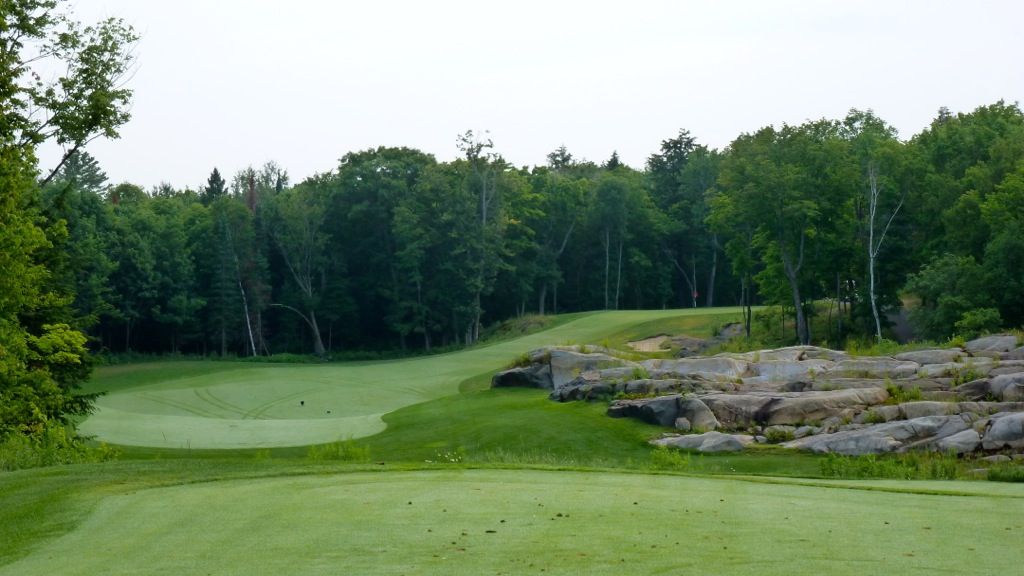
The green is set atop a small plateau with a steep drop-off left of the green (lost ball) and a disastrous bunker cut naturally into the hill short of the green. By cutting the green so near a steep drop-off short of the green, the severe back-to-front nature of the 2nd green is difficult to spot.
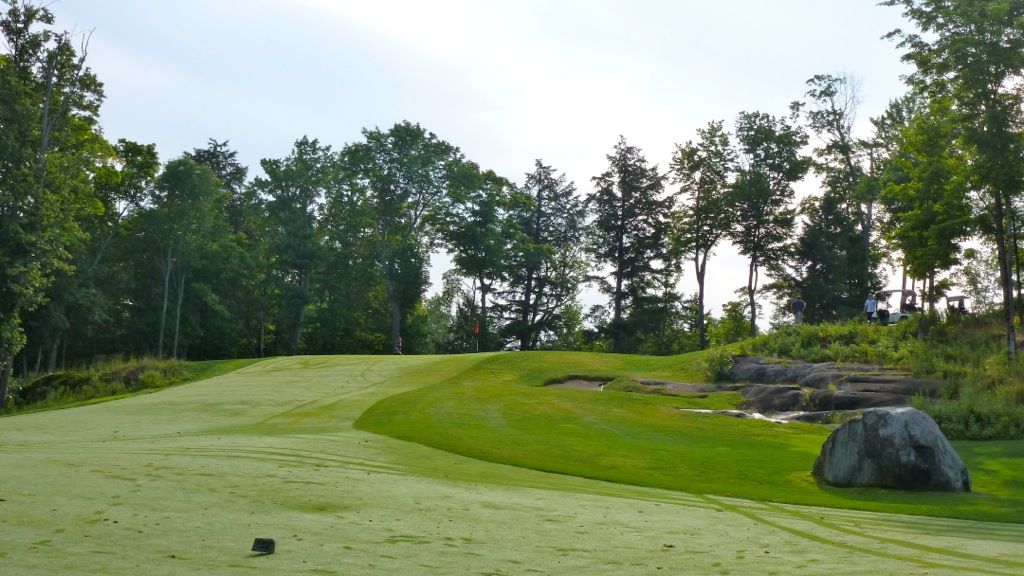
The third is the shortest of the par-3s, played downhill to a raised green, misses anywhere will be penalized.
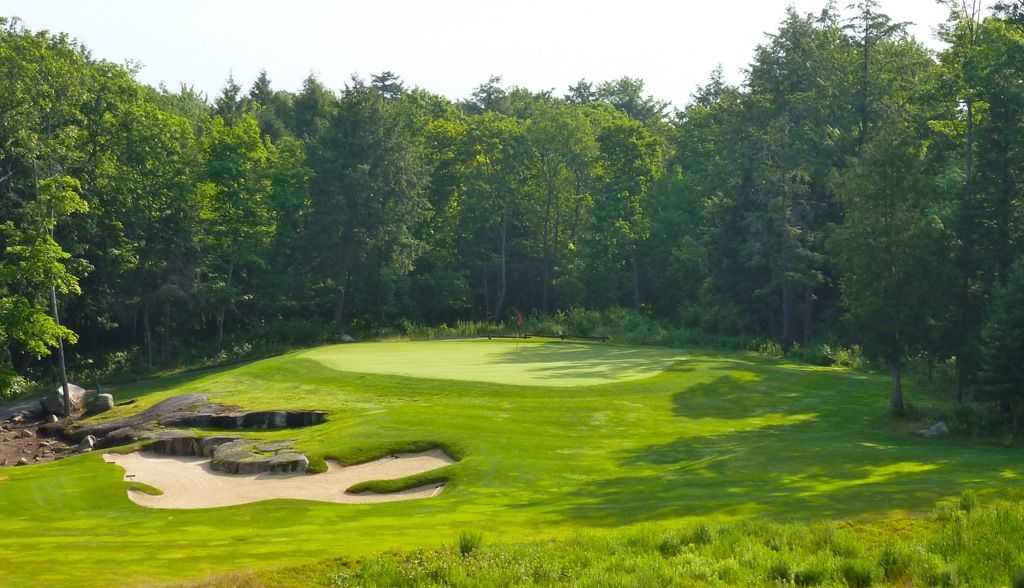
The approach to the 4th is the first of several instances were McBroom uses blindness as a hazard; I think he misses the mark in his attempts. Tee shots between 230 yards and 260 yards will collect to a low-point leaving a blind approach. Only the longest of hitters will have a view of the 4th green...
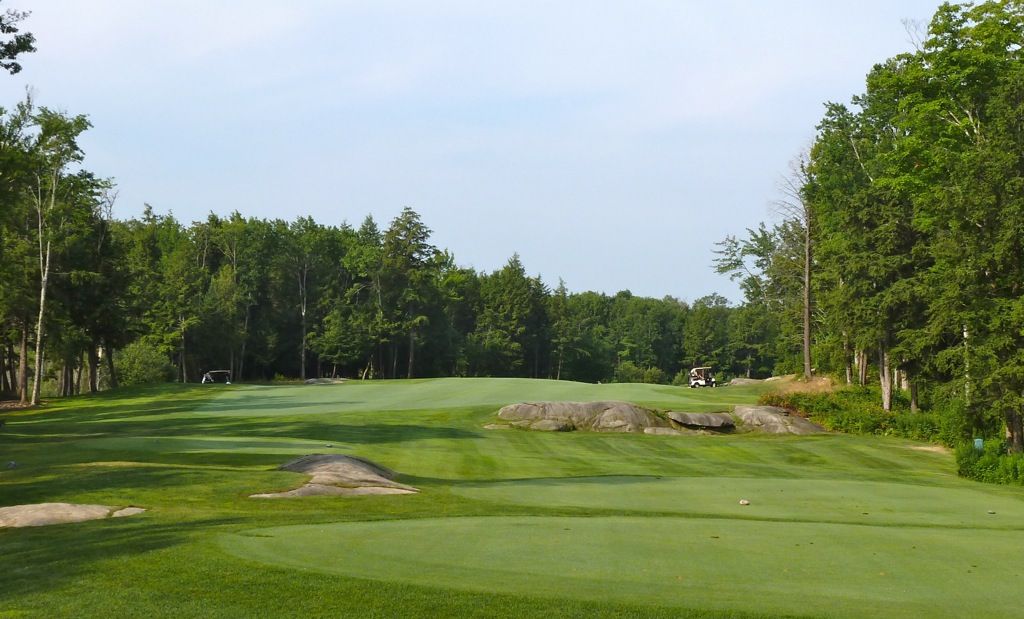
Approach from 120 yards out:

Approach from 100 yards out:

The very reachable par-5 5th features the least interesting tee shot on the course before asking the golfer whether or not he wants to challenge a carry-hazard that ends 75 yards short of the green.
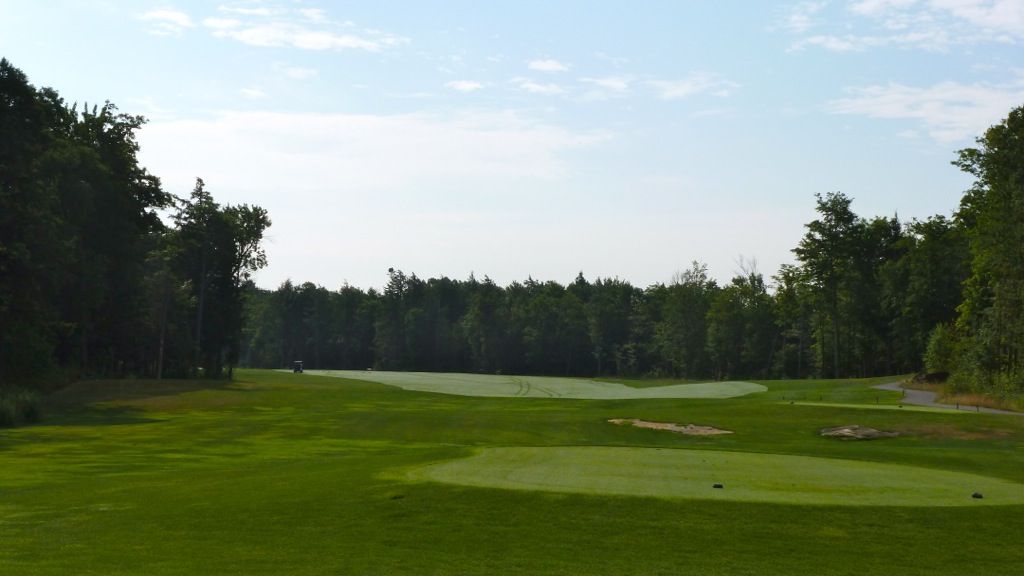
The 6th returns the golfer to more interesting terrain and features one of the most wildly contoured fairways on the golf course, though mowing lines are a bit of a disaster. Fans of Stanley Thompson will note the interesting grass island in the bunker on the left; a feature seen often on Thompson's golf courses.
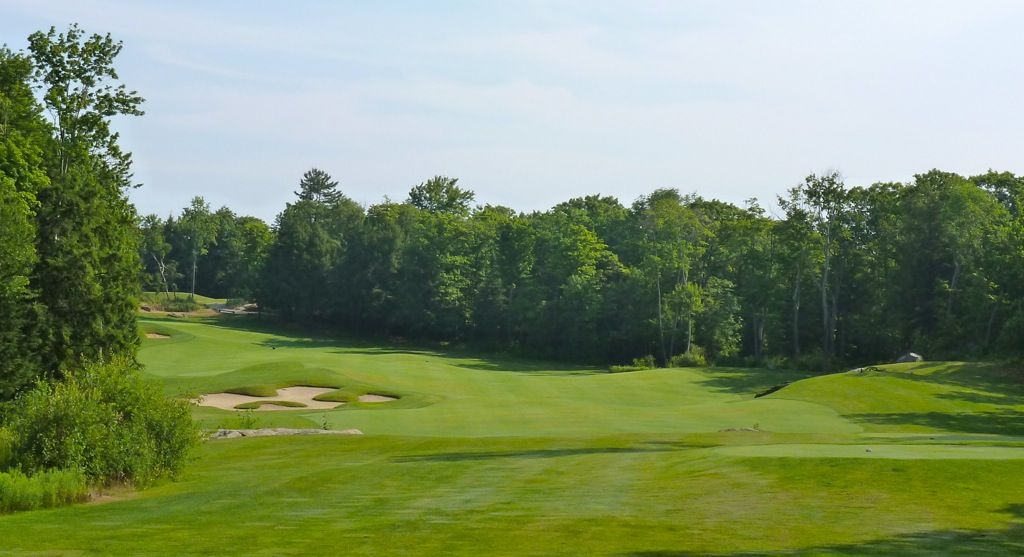
The approach is played over a nest of bunkers (something I have been critical of McBroom for using in the past, and of which I am similarly critical here).

The green is one of the better ones on the golf course. A false-front guards against shots running onto the green, while a small back-left tier (where the flag is located) creates a great Sunday pin placement and allows creative golfers to use the contouring at the back of the green to their benefit.
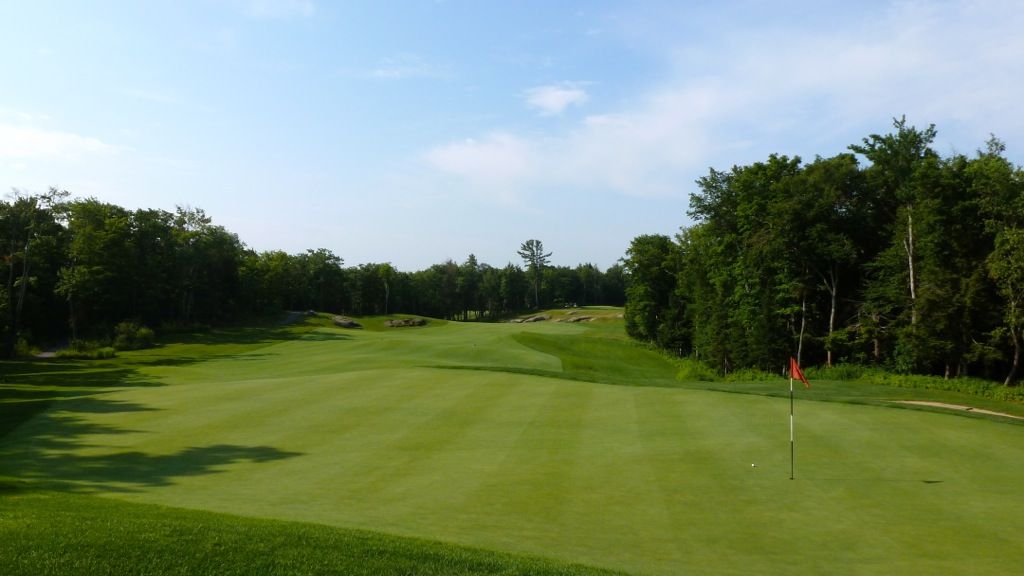
The 7th is the first of four good but very similar par-3s.
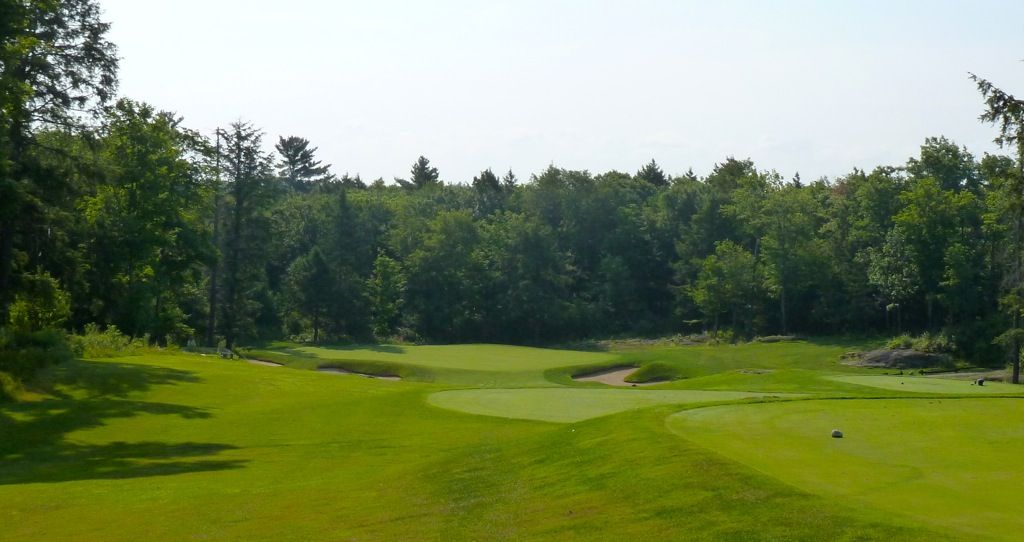
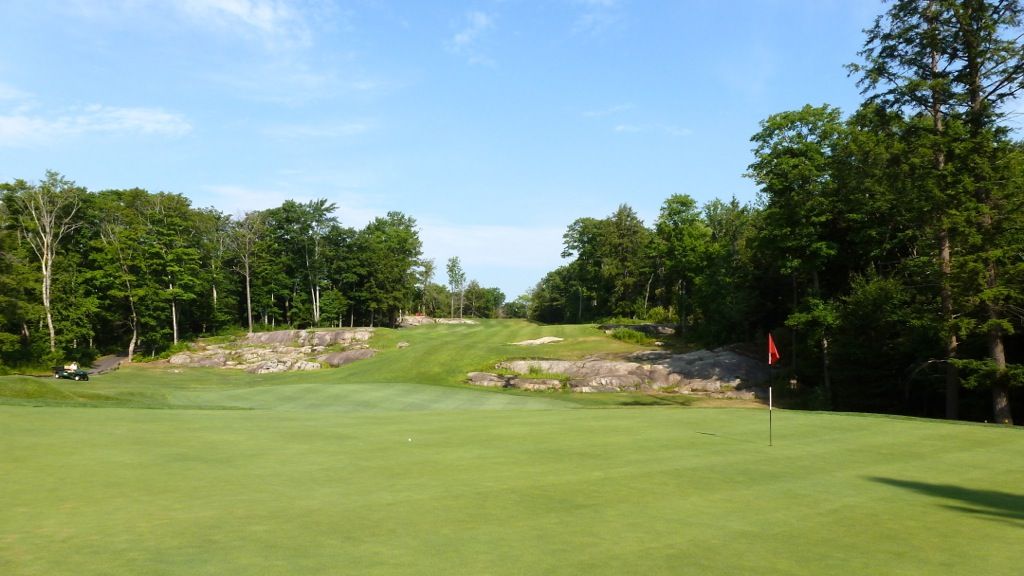
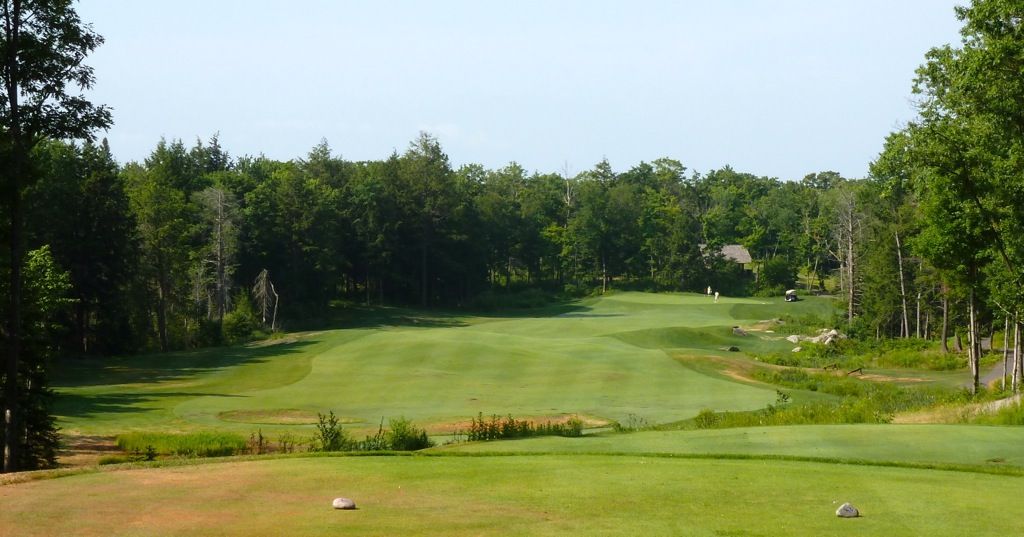
An odd design choice, the approach from the right (near the hazard) is by far the more difficult angle of approach (and it's semi-blind too!)
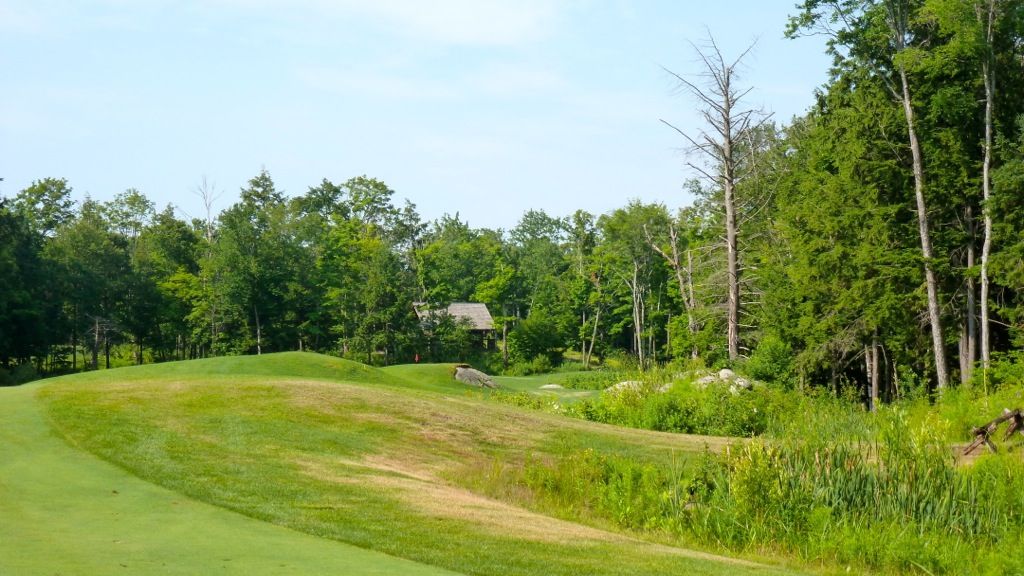
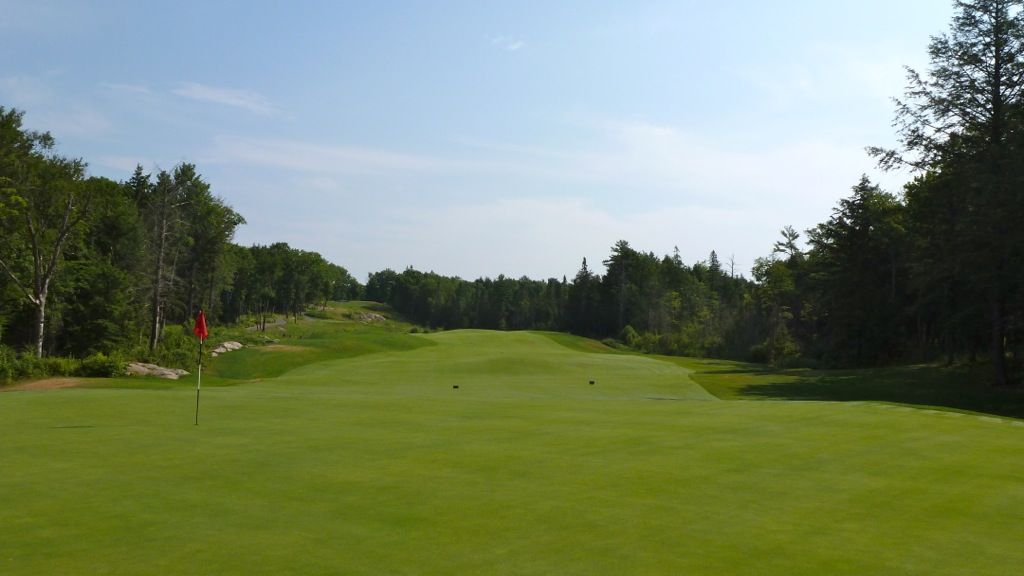
Having only played the 9th twice, I'm not sure if it is genius or horrendous. The ideal line from the tee is over the bunker (though, again, there are mowing line issues).
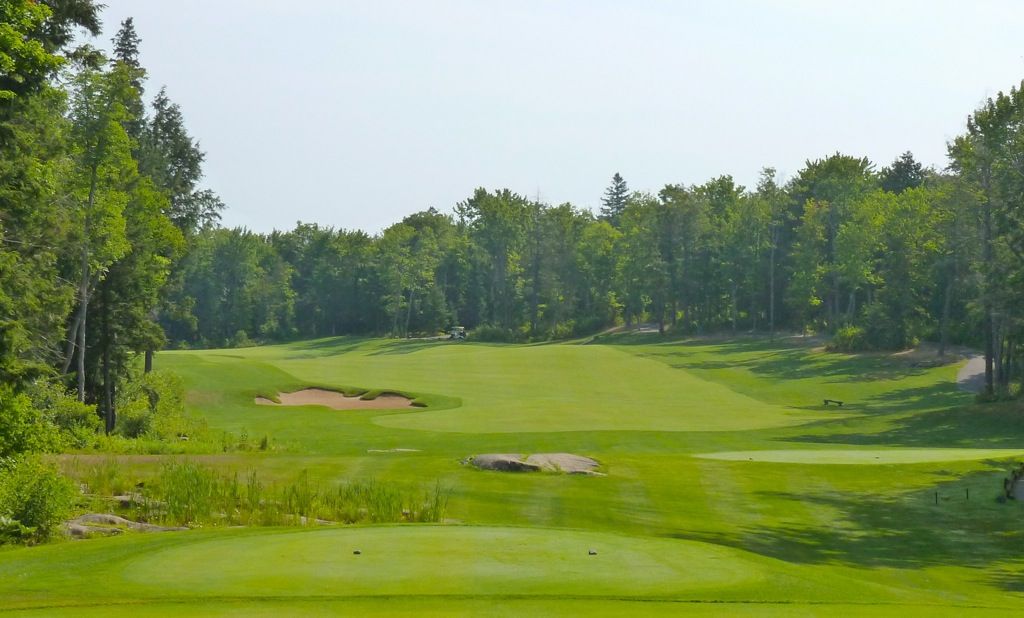
With the tilt of the fairway back toward the tee, it takes an excellent tee shot down the extreme left-hand side of the fairway to leave any view of the flag.
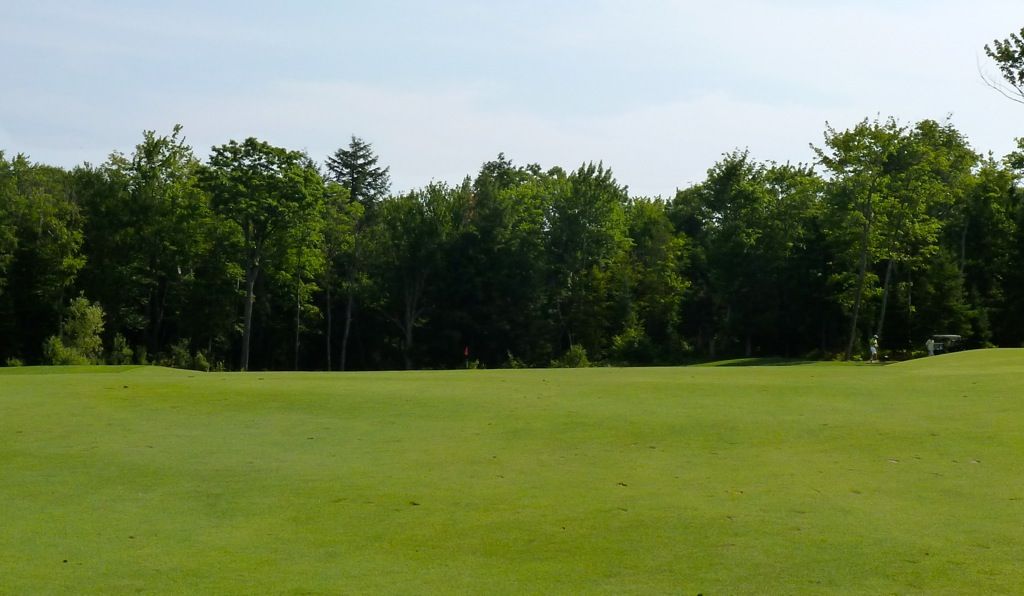
While this hump on the right-side of the fairway ensures that most golfers will be faced with a completely blind approach.
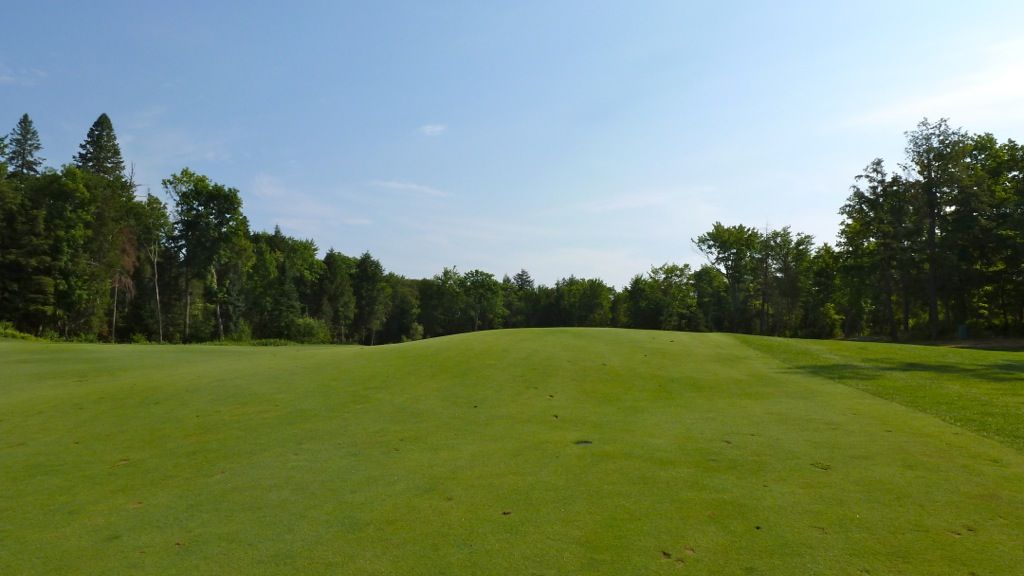
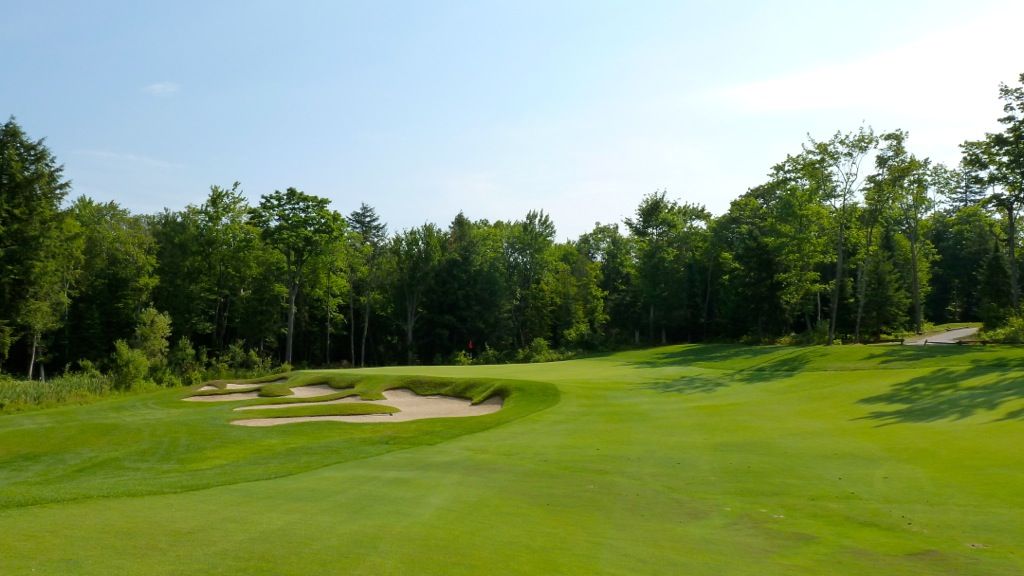
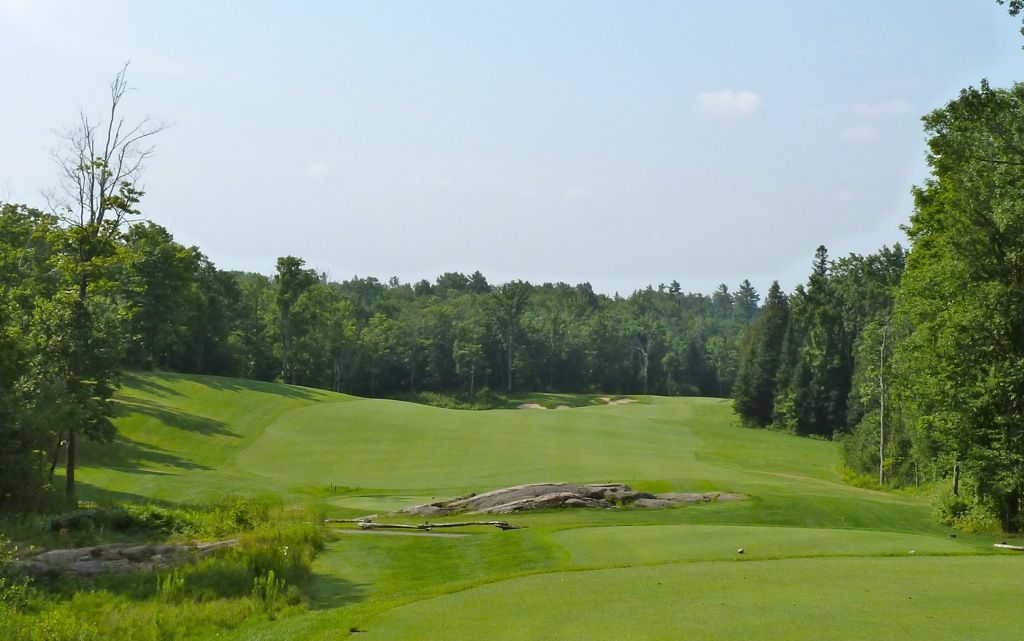
OK, one criticism, should the landing area from 125-175 yards short of the green be so excessively narrowed? I think those two bunkers NEED to be fairway.
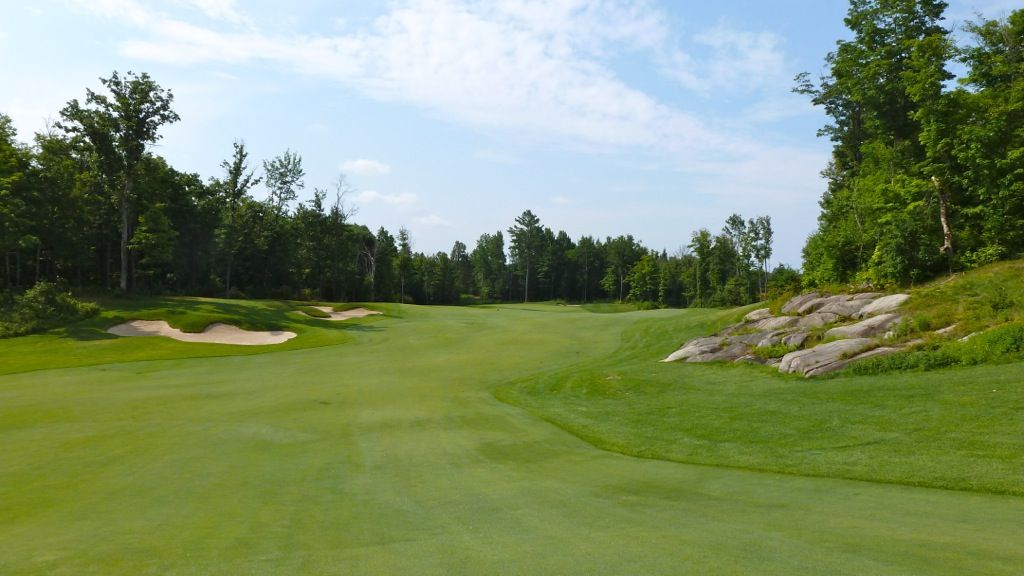
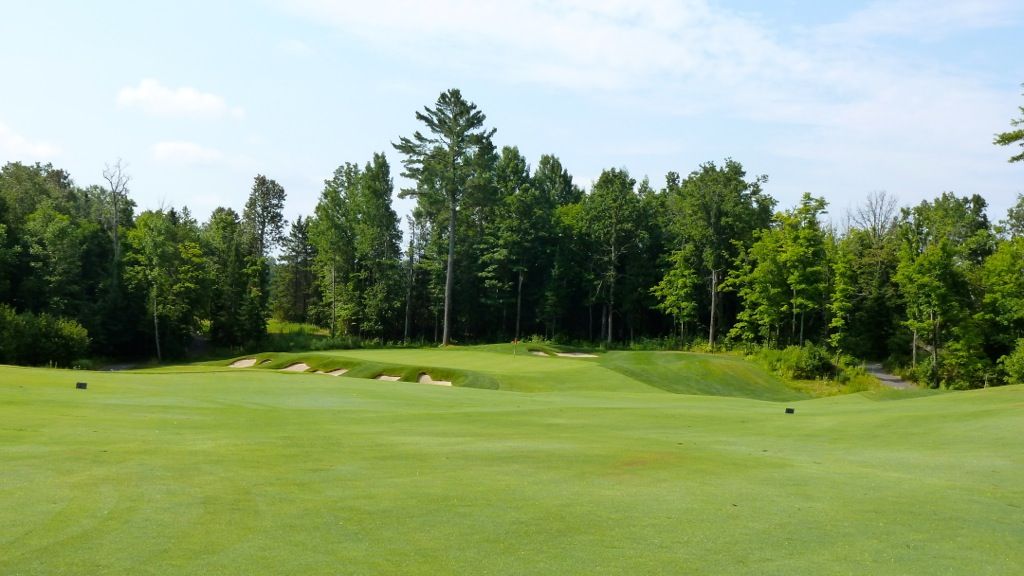
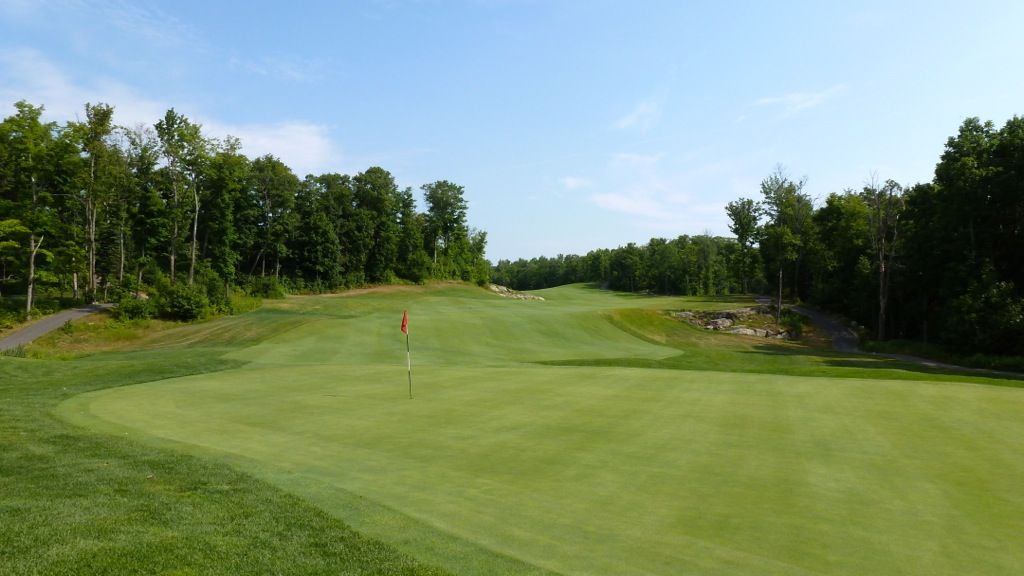
The second of the quarter of similar par-3s is my favourite. The 11th has a more open feel than much of the golf course and has perhaps the most significantly contoured green on the golf course (though the contouring is of the perimeter variety).
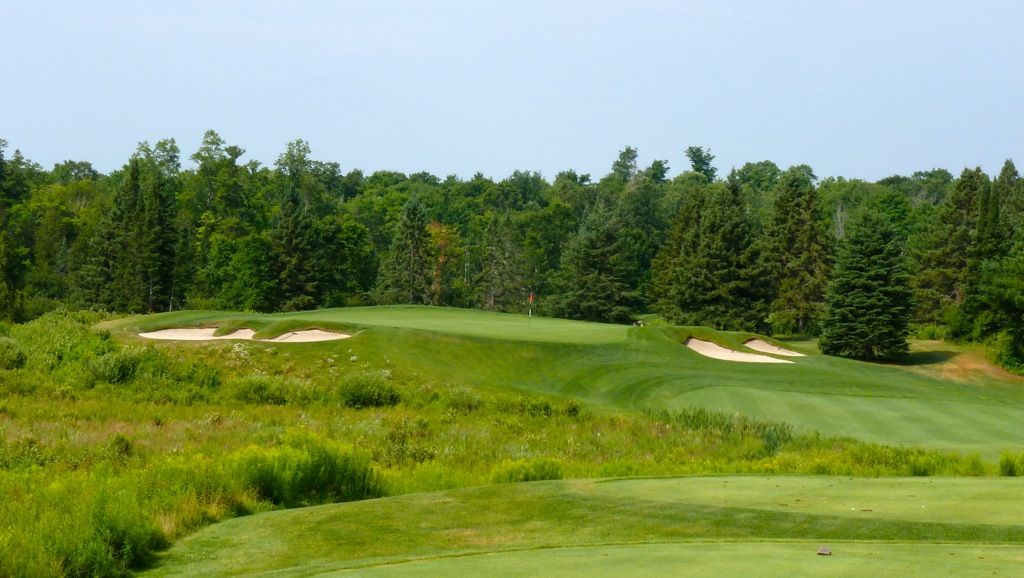
A false-front will catch any golfer not carrying his ball at least a few yards onto the green, while a large slope on the back of the green can be used by the clever golfer to keep a ball on the green.

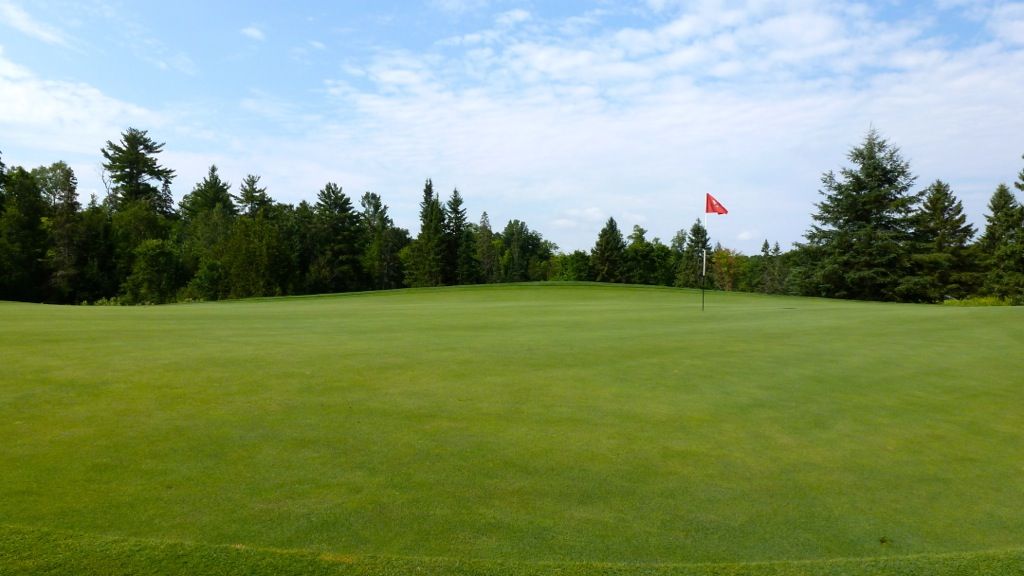
Along with the 4th and 5th holes this must be the hole that is least remembered by golfers. Still, strategic design is clearly evident. A good golf hole.
The downhill par-5 13th features another clear nod to Stanley Thompson (the bunker on the left). There is some genius use of forced perspective here as the ridge melds perfectly with the fairway bunker to give the feel that there is little room between them...
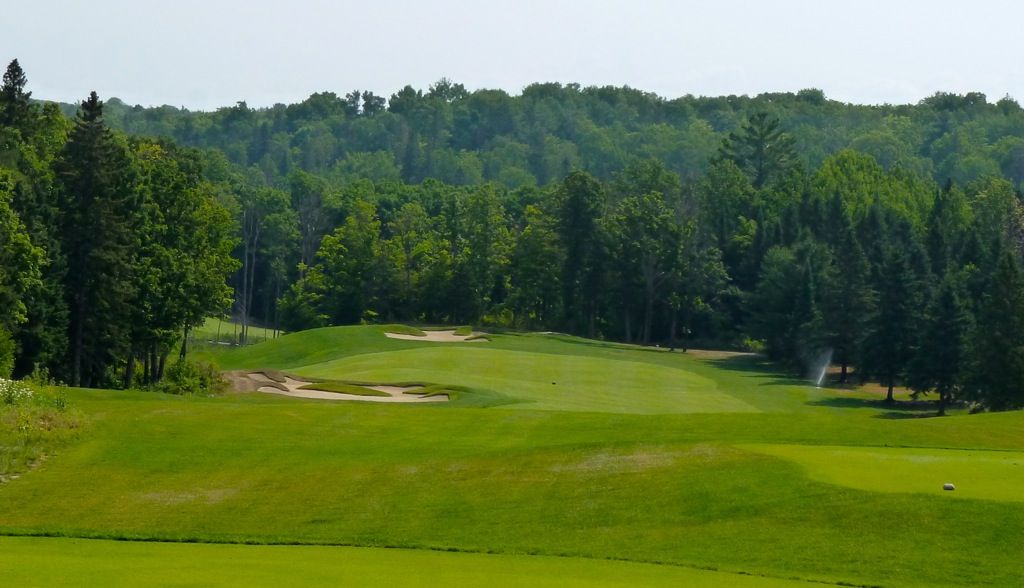
Though as seen from a different angle it is clear that there are some 200 yards between the ridge and the bunker! Very cool.
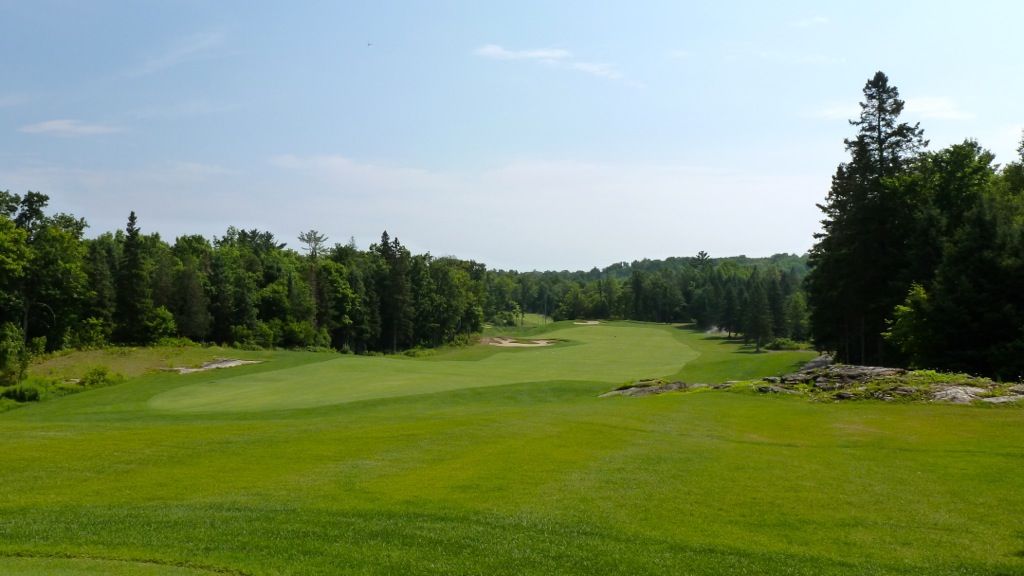
The 'Thompson' Bunker

The lay-up is a somewhat dull one that must be placed between the duo of fairway bunkers. After an ideal lay-up the approach is slightly back uphill to a blind putting surface. An idyllic green site.

Some more forced perspective at the 14th leaves the golfer unsure of the distance to carry each set of fairway bunkers (though, again, mowing line issues).

The most forced hole on the golf course. Not only does McBroom have the golfer pass this hole twice before he plays it, he must trek some 100 yards uphill to reach this tee. Clearly McBroom really wanted this hole to be a part of the golf course. It's decent, but it's more of the same at The Ridge.
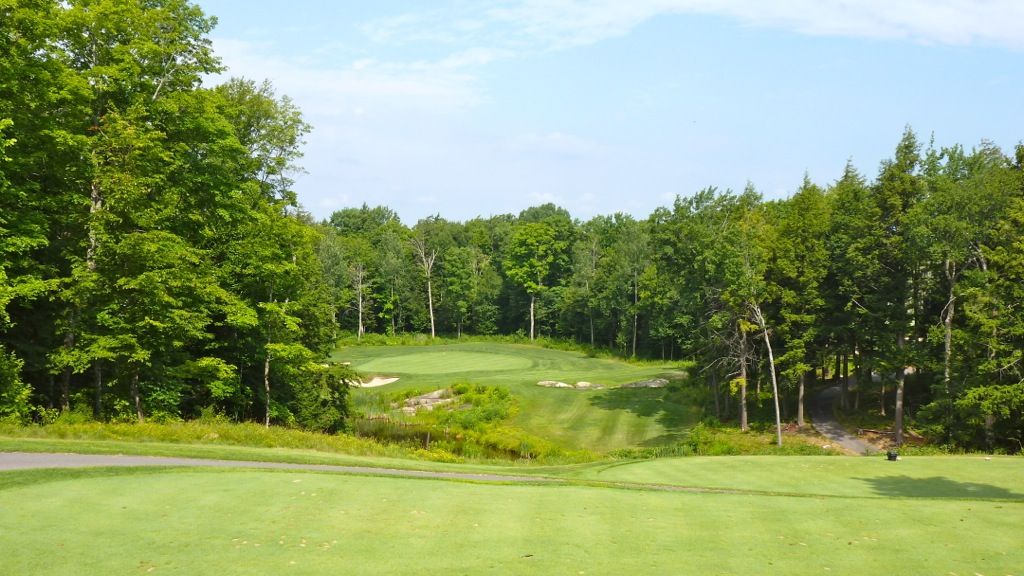
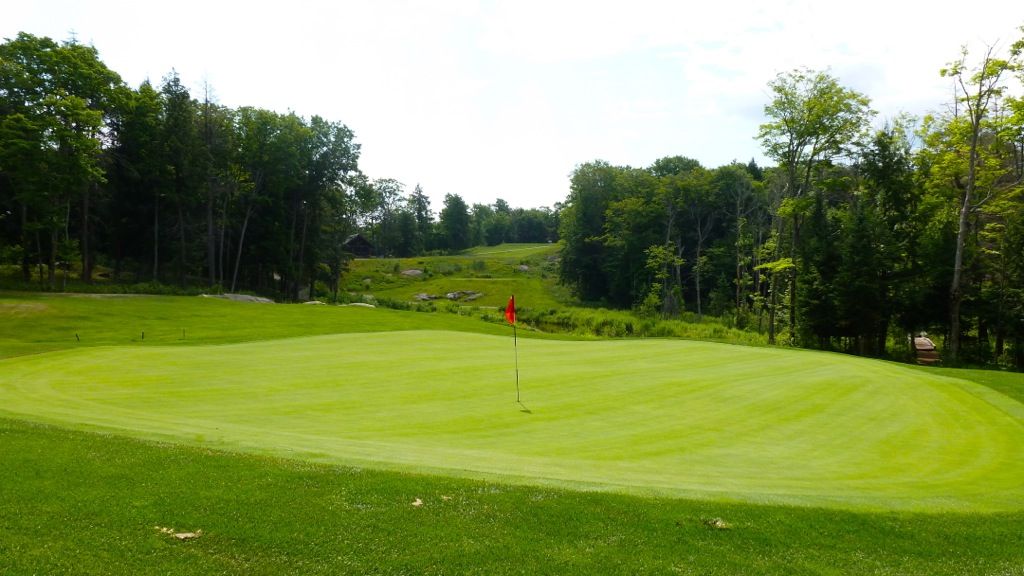
Perhaps the most questionable routing choice on the golf course; after finishing the 15th hole the golfer walks back up the hill to a location quite near the 15th tee. One has to wonder if there could not have been a tee placed near the 15th green to make this a (very good) drivable par-4. Anyways, in current form, the tee shot at the 16th is the most demanding on the golf course, with little room to miss on either side and reaching the width of the fairway requires a tee shot that moves from right-to-left.
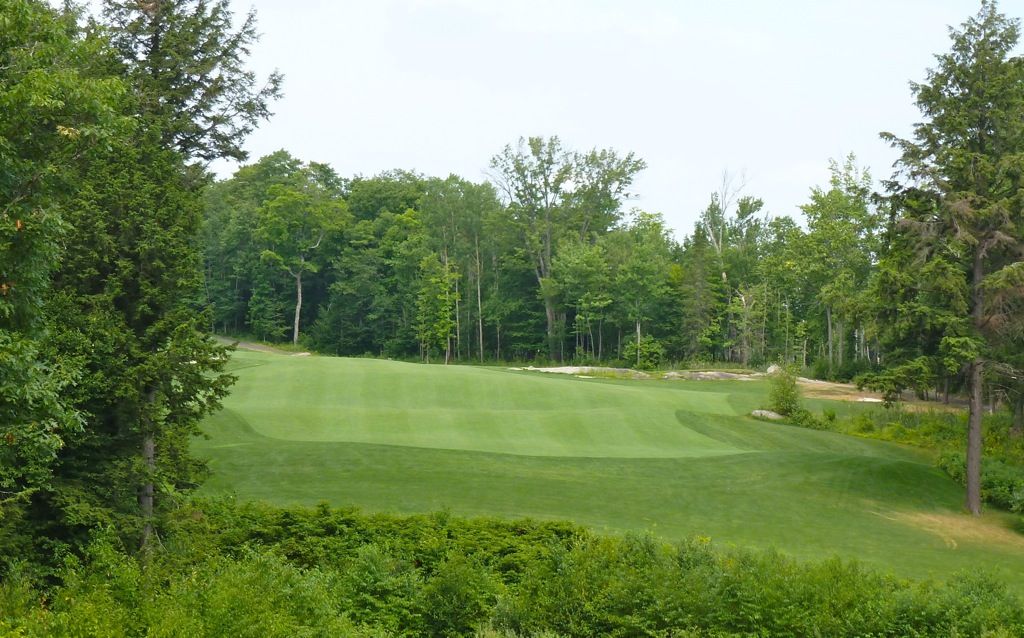
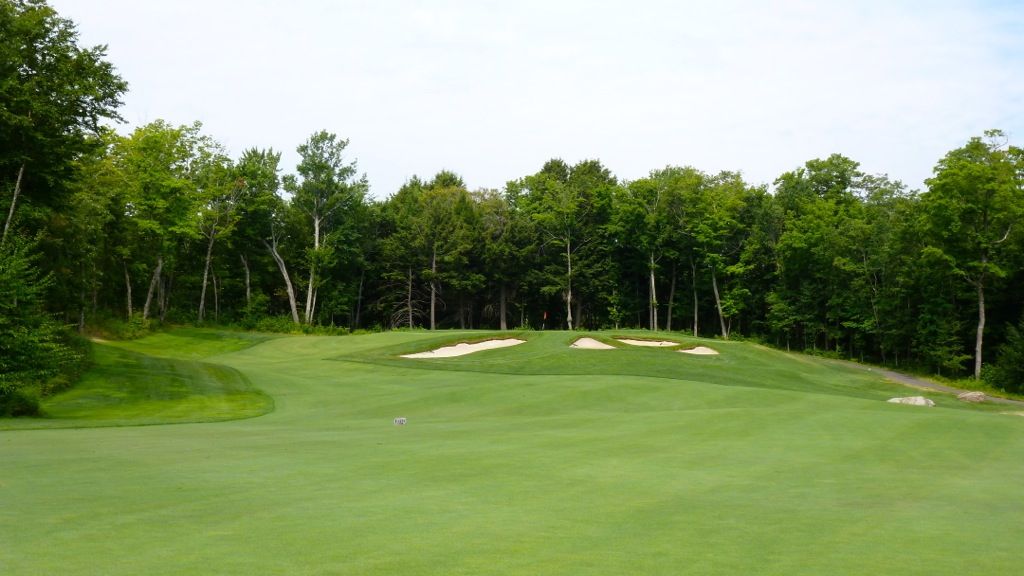
Misses right can carom a long way down this hill

And misses left can find this deep collection area.
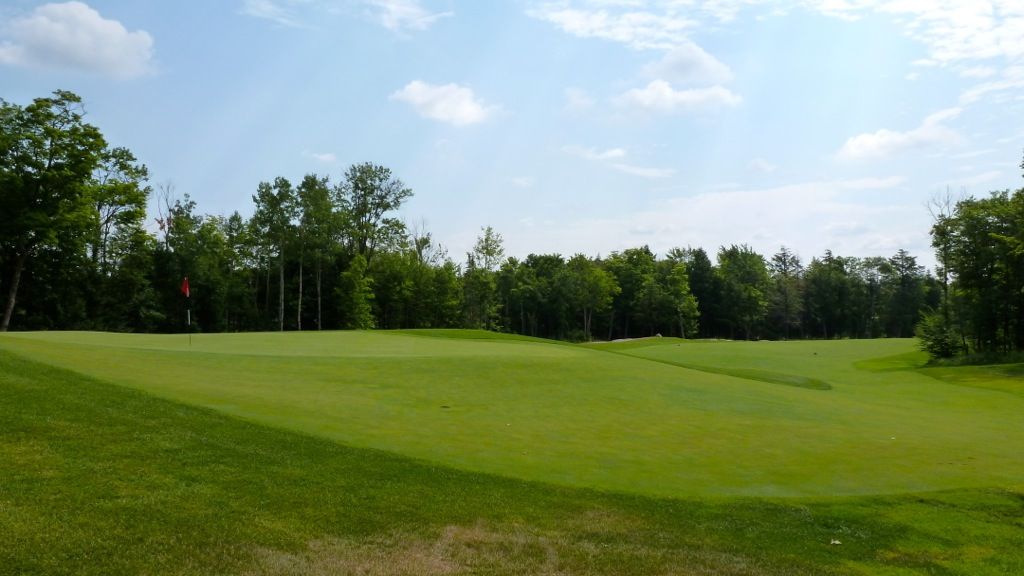
The 17th is a memorable and scenic par-3, but for me it is just too similar to the previous three par-3s and it does not feel natural. While commendation must be given to McBroom for his (apparent) use of the natural terrain to shape his fairways, in no way does it feel like this green was found (though, of course, I could be wrong).
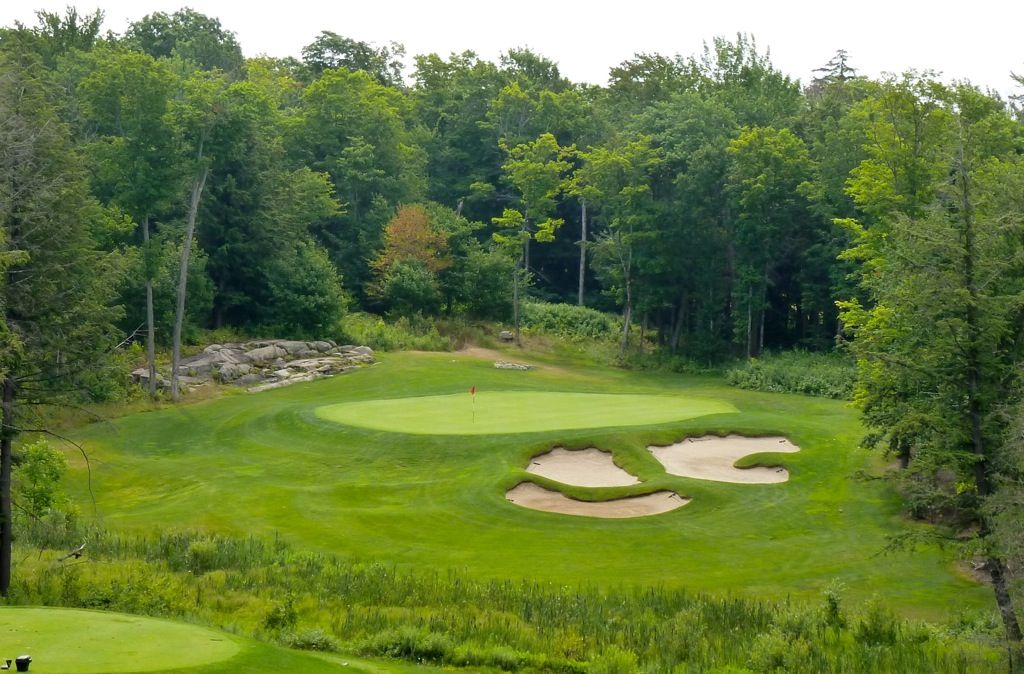
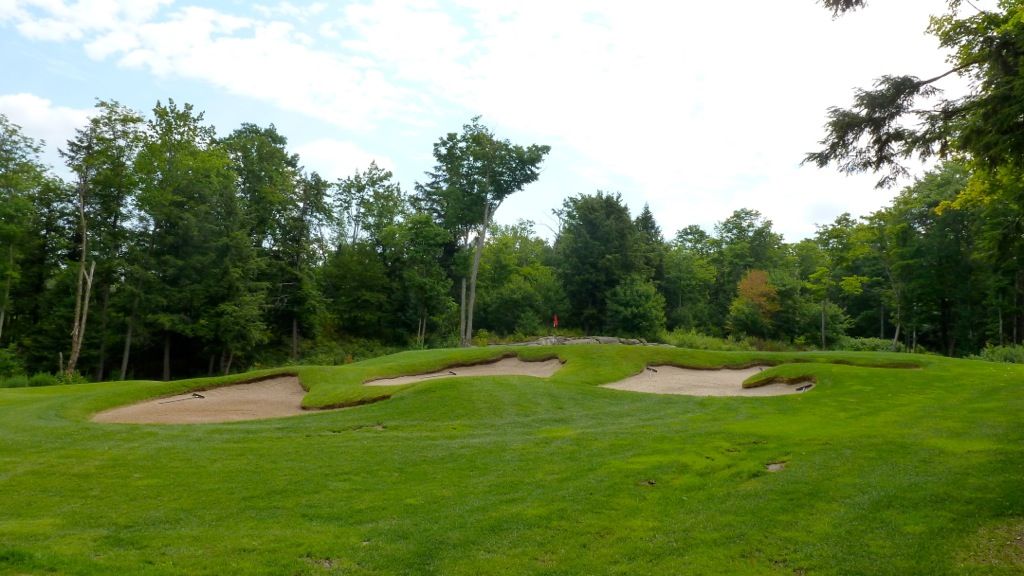
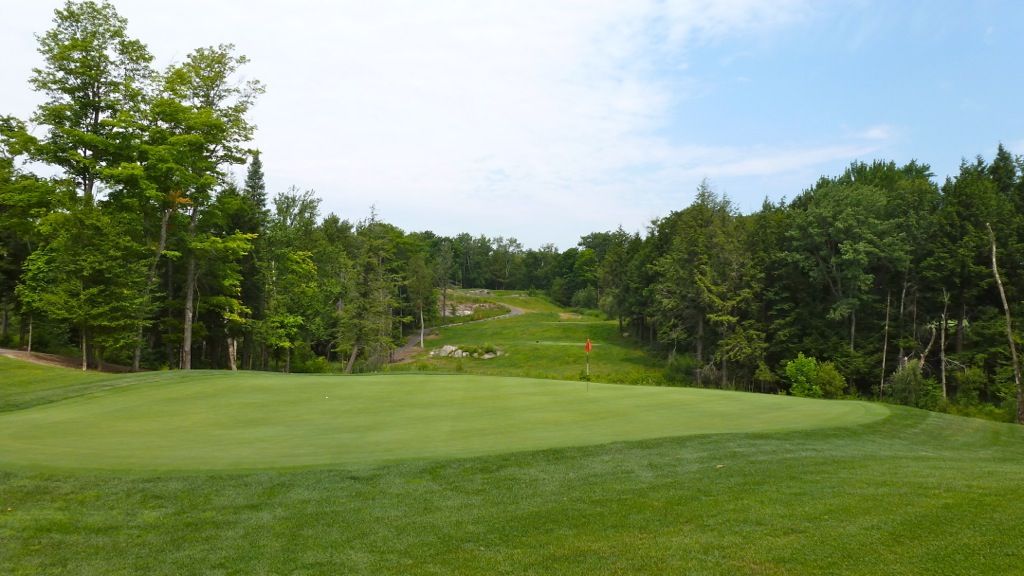
The tee shot at the 18th is intimidating, requiring a forced-carry to reach the fairway. Really a forgettable shot...
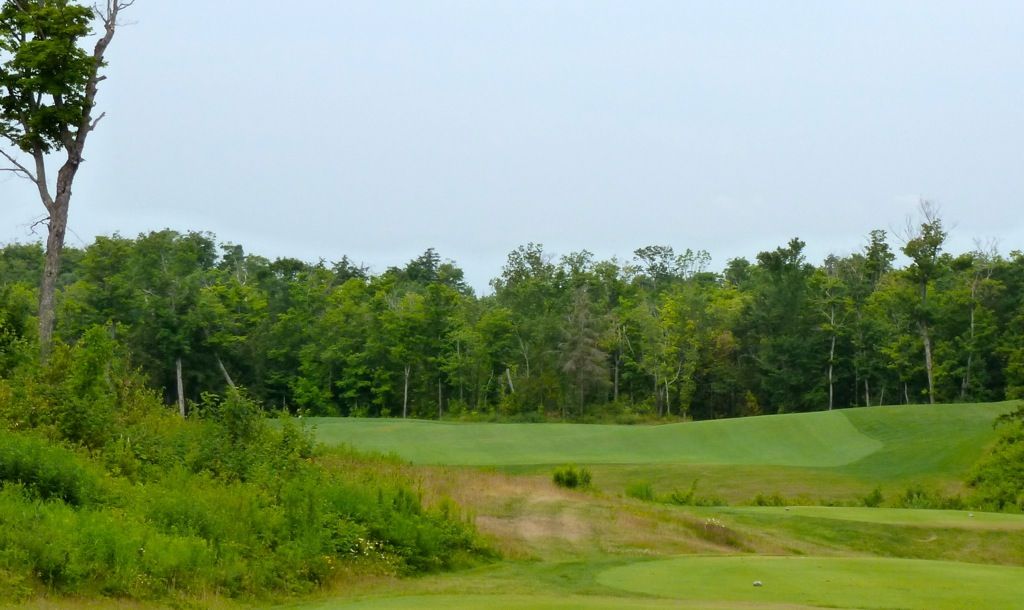
But the approach sure is memorable! A par-5 on the scorecard, given the tilt of the fairway and the downhill nature of the hole, the 18th is really a long par-4, but heck, nothing wrong with finishing with a birdie!
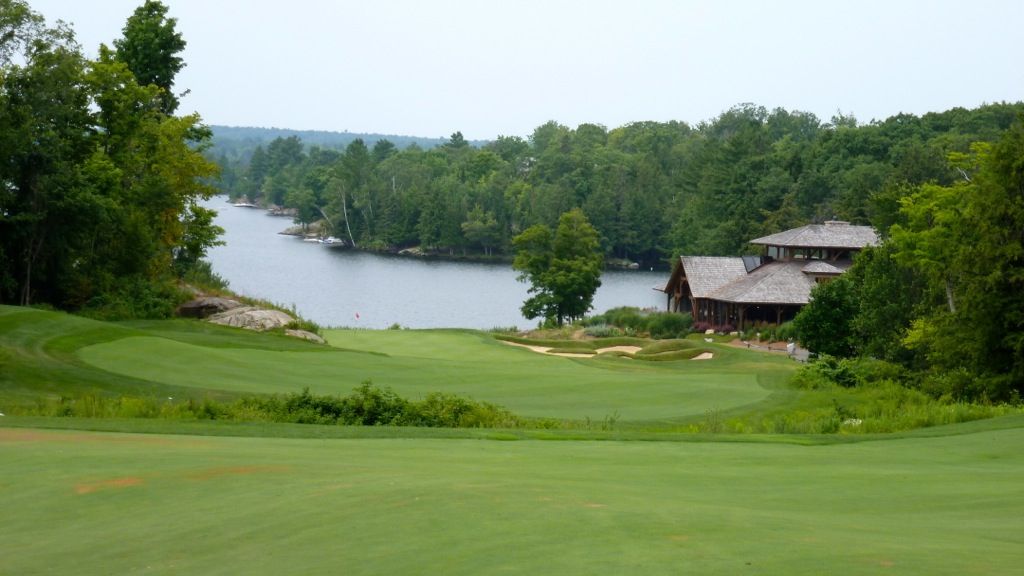
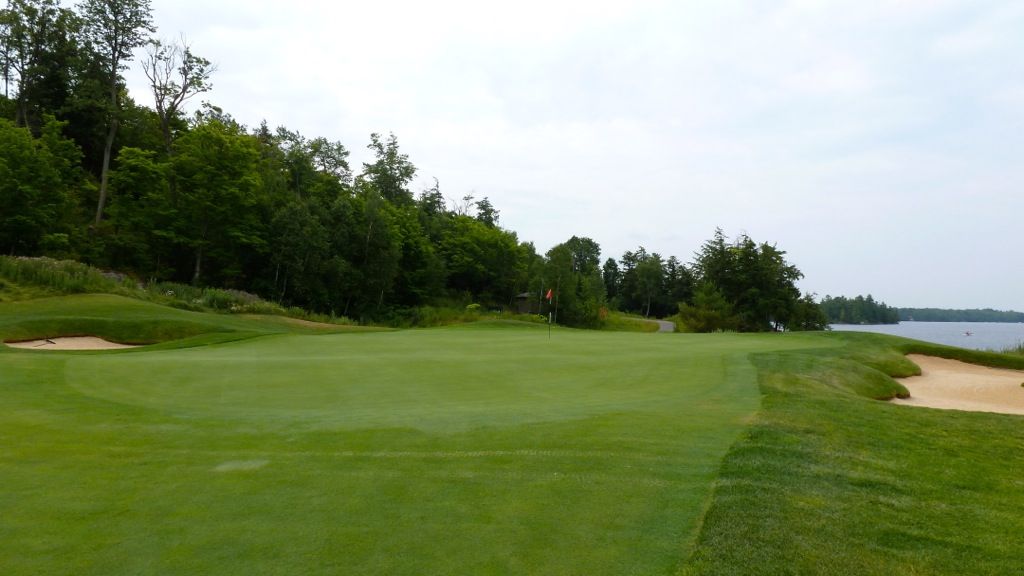
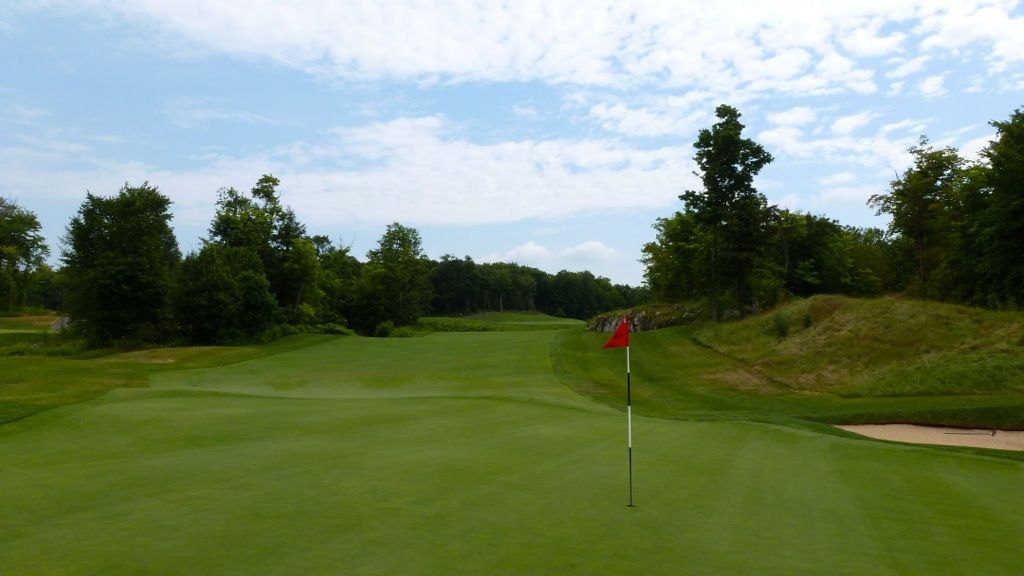

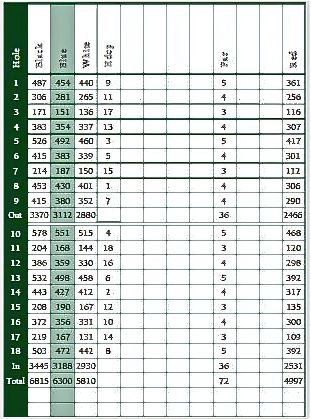
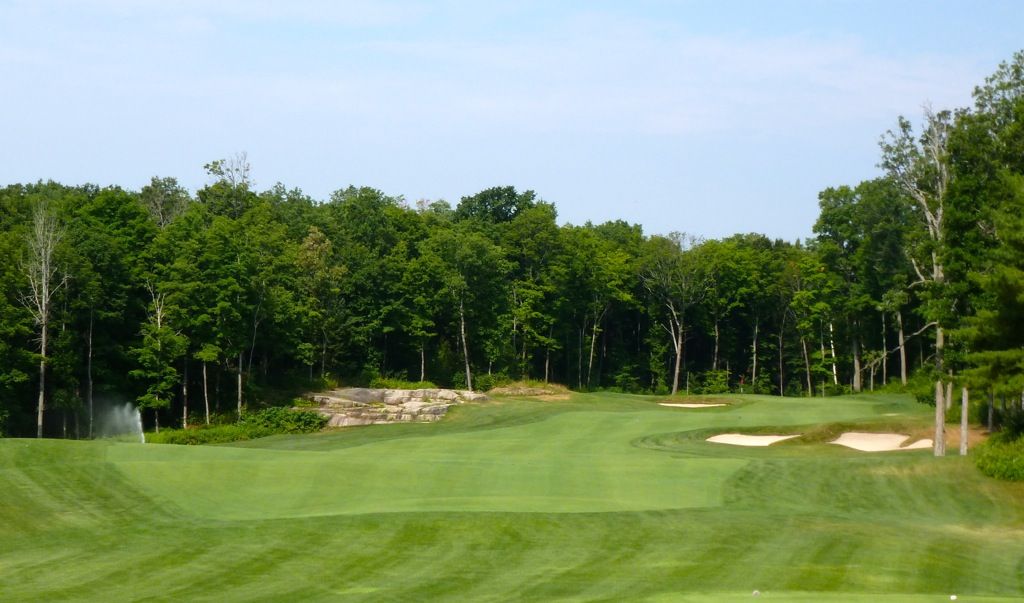
Beautiful golf course layout and outstanding scenery. Boulders exposed by glaciers are a nice touch, along with lots of water, and sand. Length is not prohibitive so this course looks like a nice venue for a challenging round of golf.
ReplyDeletehttp://hittingthegolfball.com